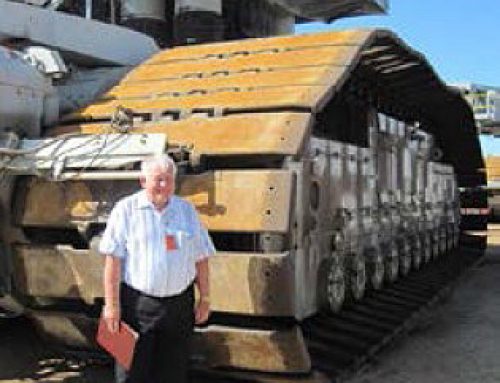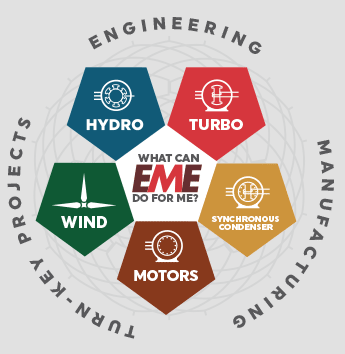
Grand Coulee Generator Core Re-tensioning Project
Built in the 1970’s, the Grand Coulee’s Third Power Plant houses some of the largest Westinghouse Hydro (600 MWe) Generators in the world. Based on their size, a unique and innovative stator support system had to be developed which accommodated the significant thermal expansion of the core while preventing magnetic buckling. This approach reduced the manufacturing costs for the large generators by eliminating the need for fabrication of several rings of approximately 70 feet in diameter which would be required if the stator was built using a conventional approach.
Over time, concerns arose that the stator core was going out of round and that there appeared to be changes in the air gap. EME was engaged to understand the unique core support system and develop a process to re-tension the core to maintain it in both a round and centered position. One of the key facts determined in the investigation was that the base of the stator had been modified; constraints added which limited the normal thermal expansion experienced during operation.
To further understand what was happening within the machine, EME specified and assisted with strain gauge readings on the forged tensioning springs. This action in conjunction with material testing and comparison to original material specifications, provided assurance that sufficient force could be developed by the tensioning system. Additionally, EME worked with a laser metrology firm to perform precision measurement of the rotor and stator independent of one another. Prior to removal of the rotor, it had only been possible to measure the air gap at the top and bottom of a stator which is approximately 12 ft. in height.
Some interesting facts about the generators:
- The stator is over 60 ft. in diameter, yet the back iron depth is only 7”.
- When cold, the stator is deliberately in a 15 lobe shape when viewed from above, and slightly bowed in the middle, or “barrel shaped”. As the stator warms, it expands 88 mils for every 10°C. The air gap at full load would be some 180 mils (almost 3/16”) greater than at cold standstill.
- A special hydraulic crane had to be designed and constructed to remove the generator rotors for service. The crane’s only purpose is to lift the rotors, which are 60 ft. in diameter, 12 ft. high, and weigh nearly 4 million lb each.
- Total rotating mass for one generator is over 6.5 million lb.
- When first built, one of these 600 MW generators provided enough power for the entire City of Seattle, WA.







